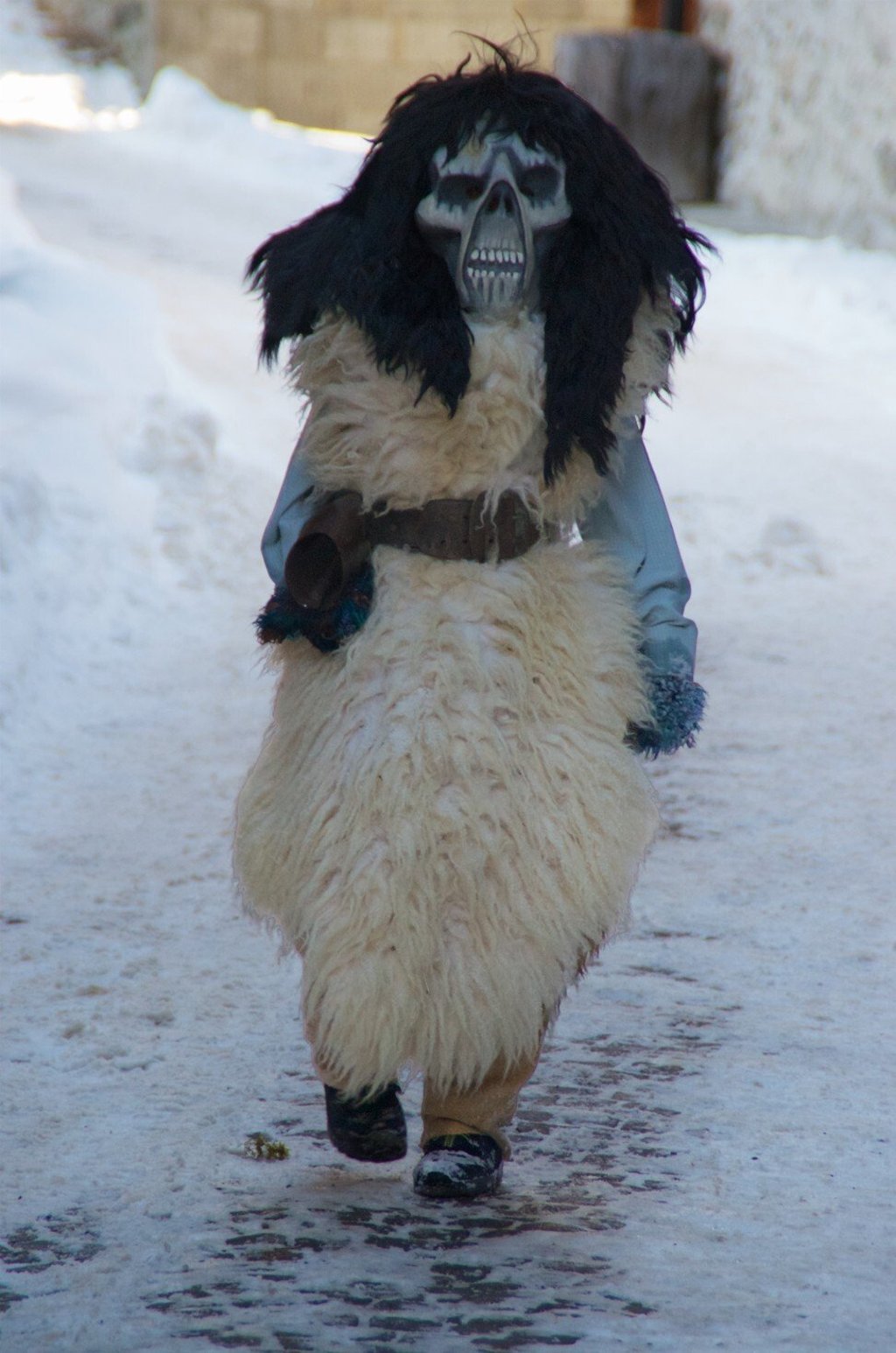Oldest Swiss carnival tradition, the marauding Tschäggättä of Lötschental – ghoulish figures in terrifying masks – may be its scariest too
- In perhaps the oldest Swiss carnival, grotesque figures have been terrorising remote villages annually for centuries
- Socially distanced festivities will go ahead this year despite coronavirus restrictions

As the midwinter afternoon begins to dim, and the dark wooden houses of the Swiss mountain village of Kippel become silhouettes against the still-sunlit peaks behind them, the silence is broken by the sallow chime of a cowbell.
Then comes another, from a different direction, accompanied by the crunch of steps on snow, and the sudden sprint of a grotesquely costumed figure across the far end of a narrow passage.
Suddenly, there’s a hint of horror about this charmingly domestic huddle of four-storey chalets with overhanging eaves and carved balconies, their walls hung with sleighs and lined with stacks of firewood. The narrow passages between them, scented with woodsmoke and the occasional whiff of the barnyard, seem chillier.
Growling from around a corner precedes the arrival of a menacing ghoulish figure with skull-like face, hideous teeth, cascading hair, oddly tasselled gloves, and an inside-out sheepskin gown tied by a broad leather belt that should be around the neck of a cow, the bell projecting to one side. Luckily, this is only a miniature Tschäggätta: a late-afternoon returnee from school looking to get some scaring in before dinner. It is easily placated.

After dark things will get more hairy. Groups of growling monsters twice the size will roam the streets in small bands, intimidating passers-by and entering Kippel’s cosy Dorfkeller and Hotel Petersgrat restaurants to dismay diners enjoying hearty cheese-laden dishes.